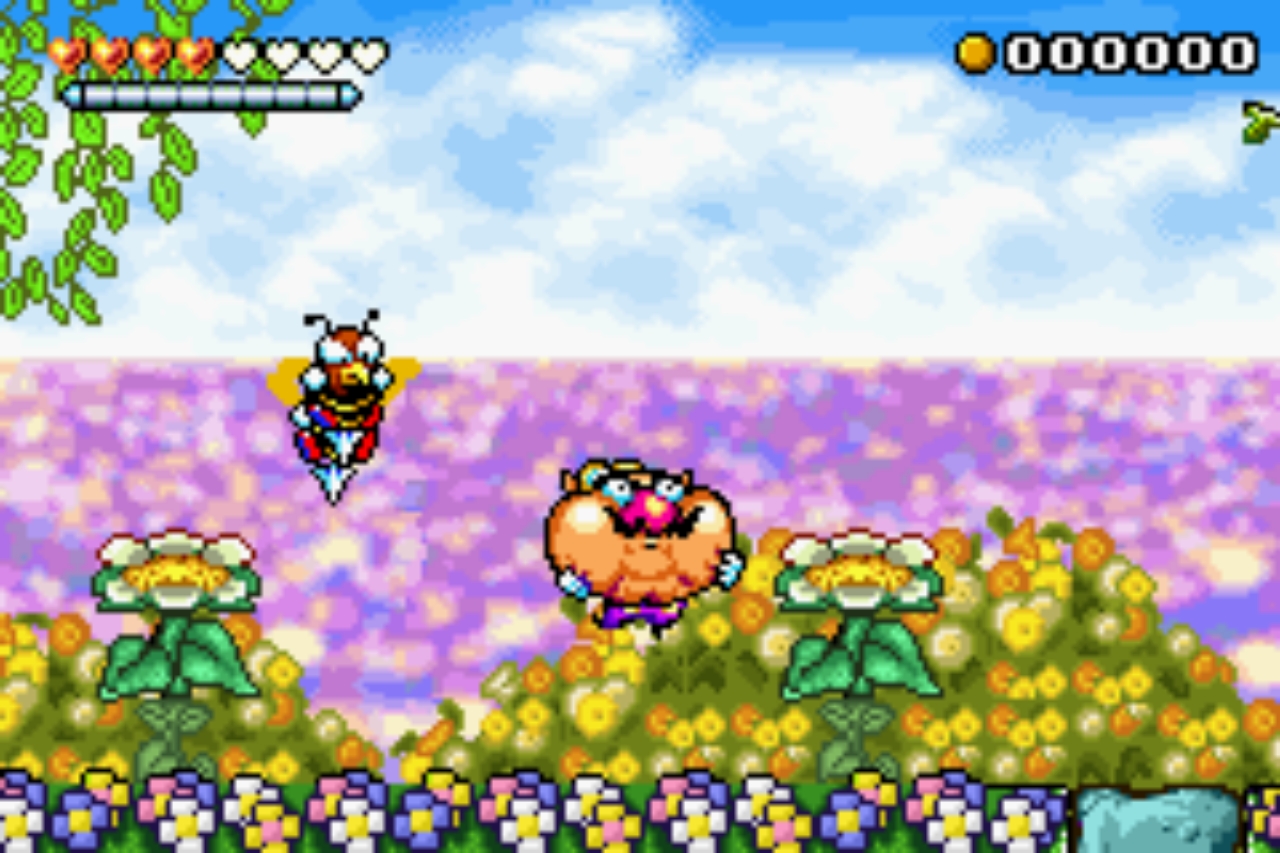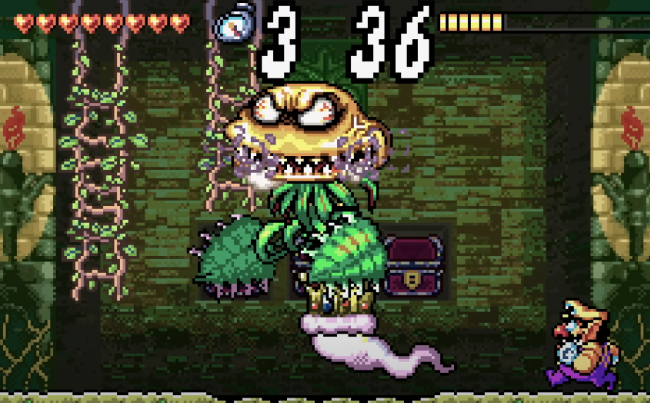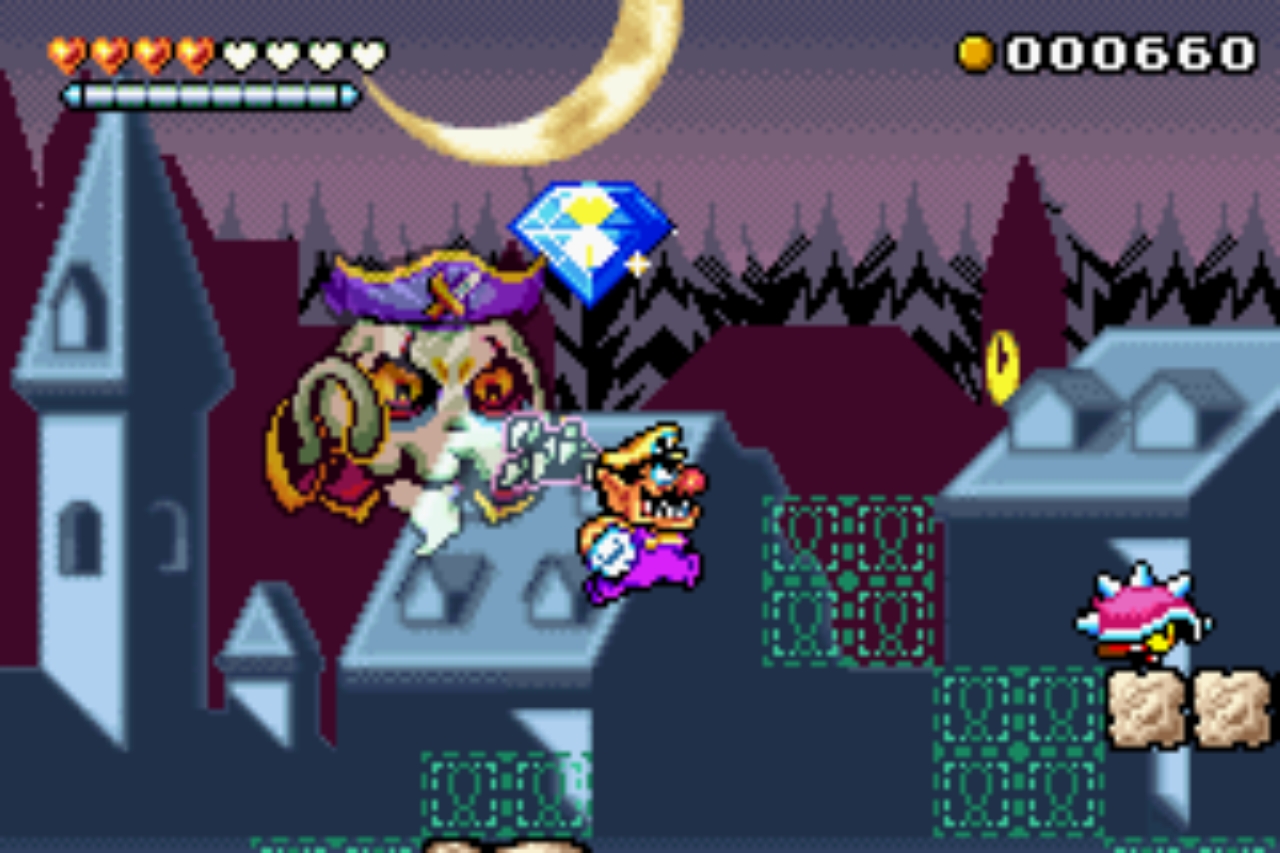The early 2000s were a golden era for platformers and the Game Boy Advance was the perfect system to welcome those games. One of them was Wario Land 4, a game that did things differently and dared to step away from the ordinary. The game is coming to the Nintendo Switch Online service so I decided to check it out on my Analogue Pocket to see if it still holds its weight in gold today.
A different type of quest
Unlike the heroic plumbers and sword-wielding adventurers of Nintendo’s universe, Wario is in it for one thing and one thing only: cold, hard cash. There’s no princess to save, no kingdom to restore, just treasure to grab. The story kicks off when Wario stumbles upon an ancient news article about the legendary Golden Pyramid, which is said to hold unimaginable riches. Without a moment’s hesitation, our iconic anti-hero jumps into his pink convertible and speeds off, ready to claim it all for himself. The setting is a nice callback to the Egyptian theme found in Super Mario Land on the Original Game Boy but that’s where the similarities end.
The pyramid isn’t just a giant piggy bank waiting to be cracked open, it’s a labyrinth filled with strange creatures, tricky puzzles, and powerful bosses standing between Wario and his fortune. To escape with his loot, Wario must navigate through four themed zones before taking on the final boss. The beauty of Wario Land 4 is that you can tackle these areas in any order, giving a sense of freedom rarely seen in platformers of its time; a gameplay mechanic that still stands strong today.
One of the most original platforming games
At first glance, Wario Land 4 might seem like a traditional platformer, but it quickly proves to be so much more. Instead of simply running and jumping through levels, Wario’s moveset is built around brute force; he dashes through walls, ground-pounds enemies, and even uses his own weight to solve puzzles. But the real magic happens when Wario starts to transform.
Throughout the game, enemies and hazards don’t just damage Wario; they mutate him in bizarre ways. A bee sting inflates him like a balloon, allowing him to float upwards. Getting set on fire turns Wario into a screaming fireball that can burn through obstacles. These transformations are more than gimmicks; they’re essential tools for solving the game’s many puzzles, forcing you to think outside the box. The transformations have always been one of the things that made Wario Land games so unique but in this fourth installment, the developers really went crazy with it. In combination with the open approach of levels, this is simply one of the best games in the genre.
The level design takes full advantage of these mechanics. Unlike Mario’s linear platforming gauntlets, Wario Land 4 is all about exploration. Hidden passages, destructible walls, and secret rooms are everywhere, and uncovering them often rewards you with treasure or power-ups. But there’s a catch; each level has a time-based escape sequence. Once you activate the magical Frog Switch, the clock starts ticking, and you have to race back to the entrance before time runs out. This twist adds an exhilarating layer of tension to an otherwise methodical game, making every run through a stage feel exciting and unpredictable. If you could compare it to something, this is the Majora’s Mask of the Wario Land franchise and I loved every second of it.
Even the difficulty settings add depth. The game offers multiple modes, with key items appearing in different places depending on the challenge level. If you complete both Normal and Hard mode, you unlock Super-Hard mode, which is a true test of platforming skills. It’s a subtle yet brilliant way to keep players engaged long after the credits roll. Since it’s not a very long game, you can clear it under 10 hours, these modes really add a lot to the replay value.
A visual masterpiece
For a GBA title, Wario Land 4 looks absolutely stunning. The game truly shines in its animation; Wario’s exaggerated expressions and fluid movements make him feel more alive than ever. Every stomp, dash, and punch is packed with personality, making Wario one of the most expressive characters in 2D gaming. The environments are equally impressive, each passage having its own distinct visual style. From the serene, nature-filled Emerald Passage to the eerie, nightmarish Sapphire Passage, the game constantly surprises with its artistic variety. Even the backgrounds are filled with quirky details, adding to the game’s surreal charm. Reviewing Wario Land 4 without talking about the bosses would be impossible. The bosses are have some of the craziest designs ever, combining traditional Japanese horror design with Western influences to create some nightmarish foes. While fighting the bosses, they often transform or get creepier the more you damage them. Each and every boss is a true feast and it’s crazy to think it’s all done on the GBA. Incredible at that time and extremely enjoyable today.
And then there’s the soundtrack; easily one of the most unique in Nintendo’s platforming history. The music in Wario Land 4 is an eclectic mix of jazz, electronic beats, and even vocal tracks (yes, actual singing on a GBA game). Some levels feature calming melodies, while others hit you with bizarre, almost unsettling tunes that wouldn’t feel out of place in a WarioWare game. The escape sequences, in particular, have a heart-pounding tempo that perfectly captures the panic of trying to reach the exit before time runs out. The game even plays with sound in creative ways, altering tracks based on what’s happening on-screen. It’s a level of audio design that was way ahead of its time.
There’s more than meets the eye
While Wario Land 4 isn’t the longest platformer out there, it more than makes up for it with its replayability. Every level is filled with hidden treasures, secret CDs, and optional challenges that encourage multiple playthroughs. Completionists will love scouring each stage for every last collectible, and the multiple difficulty modes keep things fresh even after the first run.
The boss fights also deserve an extra mention beyond their design. Each area ends with a creative (and sometimes unsettling) showdown against a giant foe, and these battles aren’t just about hitting the enemy three times and calling it a day. Instead, you’re given a time limit, and the faster you defeat the boss, the better your rewards. The game even lets you buy special items before each fight, giving you an edge if you’re struggling. These encounters are some of the most inventive in the GBA’s library, and they’re a blast to figure out.
Even outside the main game, there’s fun to be had. Wario Land 4 features a few quirky mini-games that break up the action, from a baseball home run derby to a bizarre face-matching challenge. While they’re not the main attraction, they add a little extra charm to an already packed game.
Conclusion:
Looking back, Wario Land 4 isn’t another one of those typical platforming games on the Game Boy Advance; it’s one of the best 2D platformers, period. Its mix of exploration, puzzle-solving, and chaotic escape sequences makes it stand out even today. Add in gorgeous visuals, a stellar soundtrack, and Wario’s unmistakable charm, and you have a game that’s as fresh now as it was over two decades ago. Sure, it’s not the longest adventure out there, but the crazy amount of creativity packed into every level more than makes up for it. If you can’t play the original game, you’ll have somthing to really look forward to when it lands on Nintendo Swich Online next week. Wario may be greedy, but if there’s one thing he was generous with, it’s delivering an unforgettable platforming experience. Here’s hoping the Wario Land franchise makes a return on Nintendo Switch 2.




